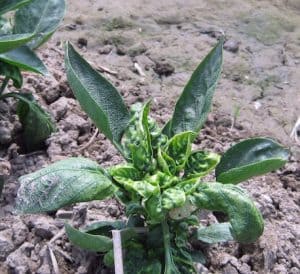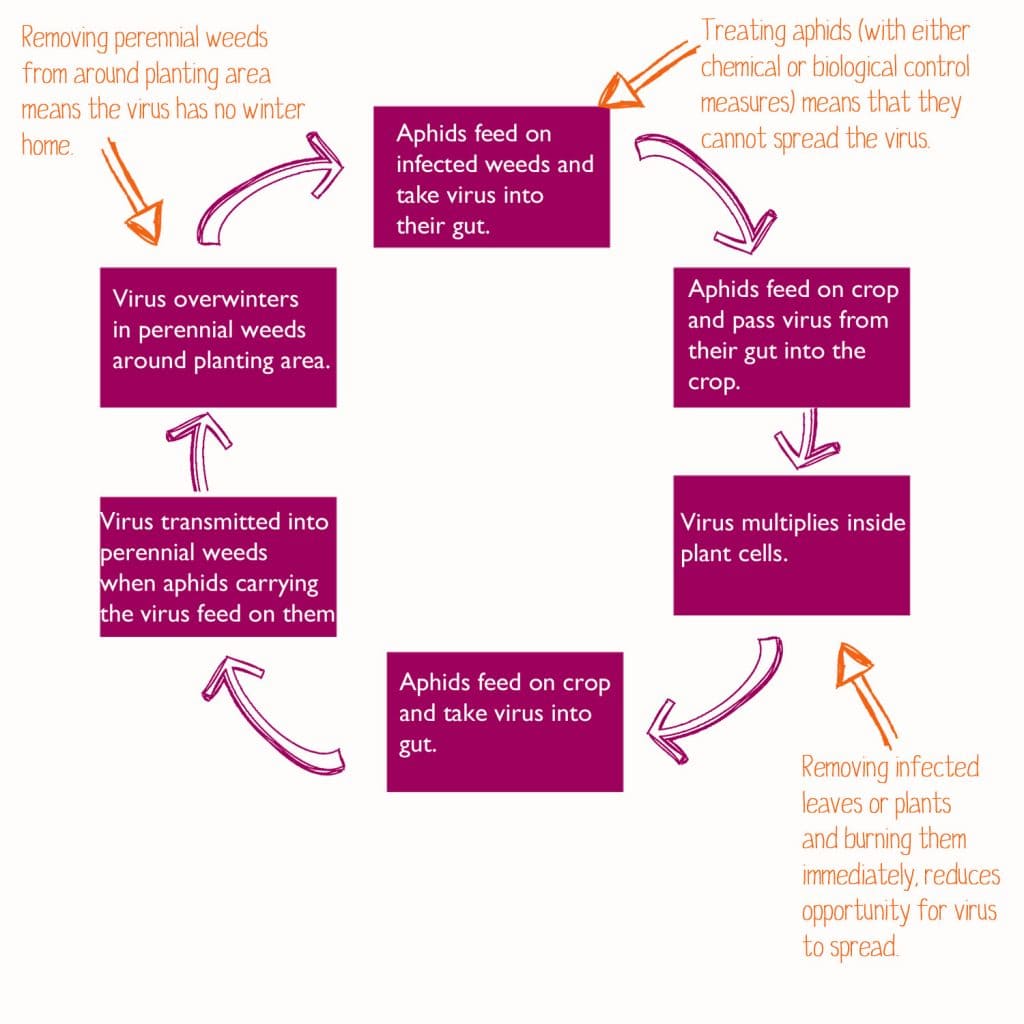
Most plant viruses have a similar life cycle, as shown in the diagram below. Viruses with this life cycle include: mosaic viruses and potato leaf curl virus.
Most plant viruses are spread by aphids (including potato leaf curl and mosaic viruses). Some viruses may also be spread by dirty gardening tools (for example, by cutting an infected leaf and then moving on to an non-infected leaf), however, this is quite difficult and not a significant route of transmission for most viruses.
Viruses typically overwinter in perennial weeds or ornamental plants.
The most important control methods for viruses include selecting plant varieties that are resistant to the virus, and eliminating weeds and infected perennial ornamentals that may harbour the virus.
Viral diseases cannot usually be controlled once the plant is infected. Therefore, every effort should be made to prevent introduction of such diseases into the garden (for example, by obtaining new plants, seeds and seedlings only from reputable, non-infected sources). Good garden hygiene is also important, with infected plants and plant materials being removed immediately and destroyed by burning to prevent spread of the pathogens. Controlling the vector population (usually aphids) can also help to minimise the spread of a viral disease once it has developed.


